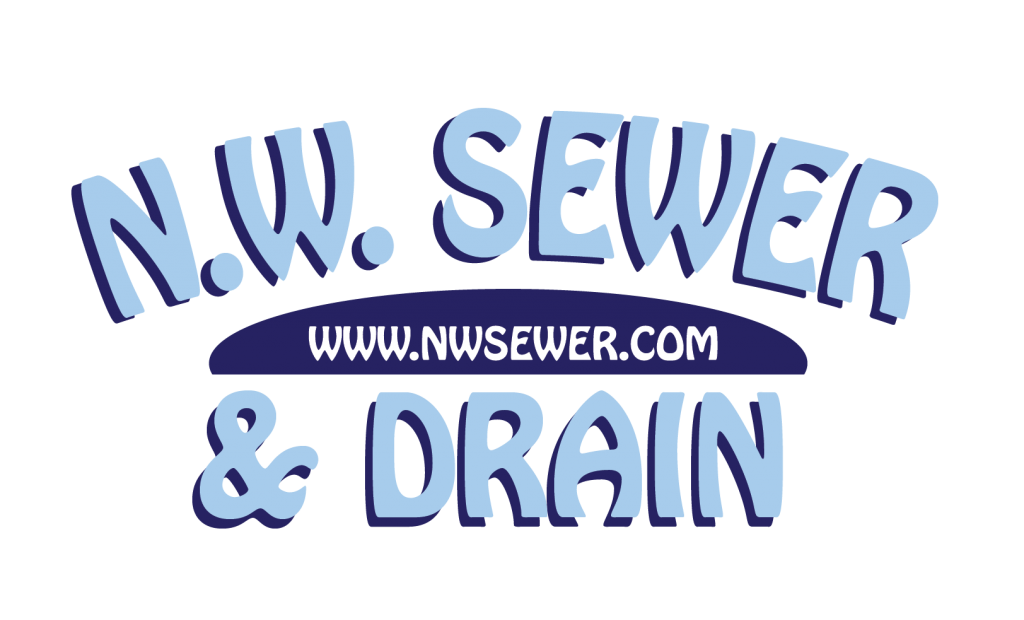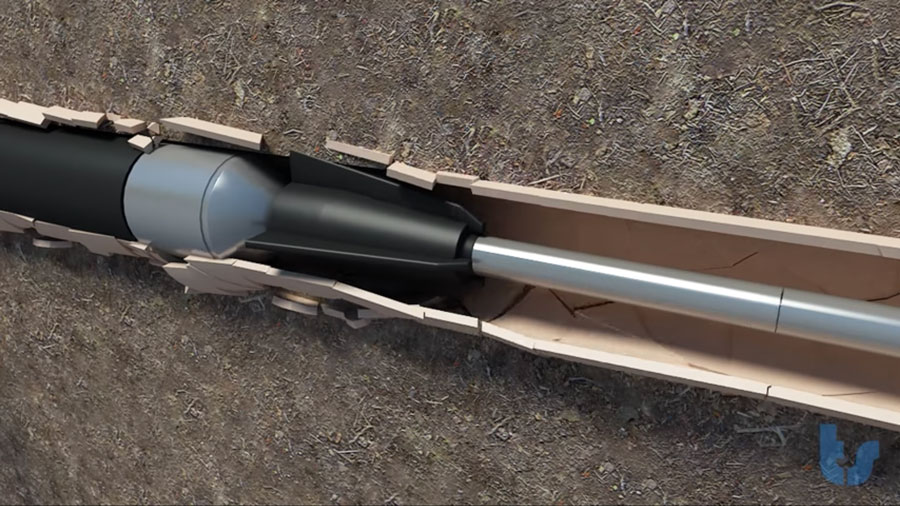This blog was updated in April 2025
Underground sewer pipes are typically ignored and almost forgotten whenever you think about plumbing. A leak caused by a root intrusion, material deterioration, or clogged pipes needs to be addressed immediately to avoid more serious problems. It is possible to fix a sewer line without totally replacing the tube. There are numerous types of sewer liners available to fix cracked and leaking pipes.
1. Cured-In Place
Techniques for trenchless pipe repair, such as cured-in-place pipe (or CIPP) lining, eliminate the need for ground disturbance. Instead, a fabric liner impregnated with epoxy glue is placed inside, creating a new pipe in the old one and closing any openings or breaks.
Once the interior of the pipe has been completely cleaned, the liner material is injected through a small access port. The liner can harden on the outside of the old pipeline and within the cracks thanks to the constant flow of hot steam through it.
Pros:
- This type of sewer line repair method is less invasive than others.
- CIPP lining can make sewer pipes last longer.
Cons:
- Curing of CIPP lining takes up to takes 12 to 24 hours
2. Pull-In Place
There are two access ports required for the pulled-in sewer liner. In contrast to CIPP lining, the lining material is already shaped to the shape of the pipe before it is placed. So that the liner may be placed from one end and drawn through from the other, the sewage line needs to be accessible on both ends.
The sewer line is a pull-in-place system soaked with epoxy. After being fitted and pushed through a clean pipe, the liner is expanded with air to help it conform to the inside of the sewer pipe. The liner is then sealed to the pipe’s sides by injecting hot steam inside.
Pros:
- After the entry spots have been closed off, repairs are typically completed quickly—steam-cured liners can dry in as little as 20 minutes.
- Large fractures and gaps can be effectively filled with a pull-in-place liner.
Cons:
- The pipe needs two access points.
3. Pipe Bursting
Replacing the entire pipe or sizable pieces of it is typically the only option for sewer lines that have serious damage beyond a few cracks. Tube bursting makes that process easier since it allows the new sewage line to be installed without first having to dig up the old one.
At both pipe ends, the sewer liner repair company will first dig two access trenches. Utilizing hydraulic force, a mechanical “busting head” is put into the sewer line. The head destroys the previous tube and installs a fresh sewer line made of plastic that trails behind.
Pros:
- Pipe bursting is a less invasive sewer line repair method.
- Newly installed plastic sewer pipes can survive up to 100 years.
Cons:
- The sewer pipe has to remain underground.
4. Internal Pipe Coating
Internal pipe coating is a coating sprayed within a sewer pipe to repair small leaks or prevent more from happening. The coating, which is constructed of thick epoxy resin, can survive for many years if applied properly. The issue with this form of sewer pipe repair is that getting the right access to the line might be difficult.
To employ an inner pipe covering sewer line repair, the area of repair must be near drainage disposal; otherwise, the tube will need to be disassembled and reassembled. The sewer pipe needs to be drained, sterilized, and cured before the epoxy coating is applied.
Pros:
- A thick epoxy coating can stop new leaks from forming and fix old ones.
- For damaged pipes, internal pipe coating is typically more affordable than other styles of sewage liners.
Cons:
- It’s not easy to access the inner layer of the sewer pipe.
5. Sliplining
For many years, slip lining has been a tried-and-true method for sewage line rehabilitation. The old pipe is essentially replaced by a smaller one. The void left by the old pipe and its replacement is filled with grout. The new line is inserted within the old one to stop any leakage.
High-density polyethylene (HDPE) pipes are typically used to create the carrier pipe, a smaller pipe. Other materials used include fiberglass-reinforced pipe (FRP) and polyvinyl chloride (PVC). To be slip lined, a pipe must be accessible from two different points.
Pros:
- It is a quick and effective mending technique.
- Instead of replacing the pipe entirely, it requires less disruption.
Cons:
- There must be two access points to the pipe.
- The new line must be less substantial than the old pipe.
Factors to Consider the Sewer Liner for Your Needs
Each sewer repair technique mentioned above will repair leakage in your sewer pipe, but there are a few factors to think about before choosing the best method for your sewer system.
Dimensions of the Damage
If your sewer pipe only has a few locations where leaks are noticeable, you can choose an inner pipe coating or slip lining. The greatest techniques for fixing many leaks throughout an entire system are pull-in-place linings and CIPP. However, if your sewer line needs to be completely replaced, choose pipe bursting.
Existence of Repair Options
Sewer repair professionals are less prevalent than other home improvement experts. Additionally, not every contractor may be able to perform all of these repairs. The options you have for sewer lining may be limited depending on your location and the available contractors.
These drainage repair materials come in a variety of price ranges. Ask for price quotations for each sewage line repair option so you can properly weigh your options.
Speak With Your Local Sewer Repair in Seattle
We are dedicated to serving all of our customers’ sewer-related requirements here at NW Sewer & Drain. You can reach out to us today at N.W. Sewer and Drains.
We’re excited to help you sort out any drain issues you might be facing in your home or office building. Ideally, consulting an experienced local sewer and drain cleaning company should be your following line of action if you are experiencing slow-moving drains, foul odor, or clogged drains in your home and need help figuring out what else to do.
At N.W. Sewer & Drain, we have a well-trained and ready-to-move team on standby. We serve the Seattle metropolitan area, including Bellevue, Kirkland, Shoreline, Renton, Lake Forest Park, Mountlake Terrace, Auburn, Everett, Marysville, Mount Vernon, and other surrounding areas.
N.W. Sewer & Drain provides top-notch drain cleaning and sewer repair services in the greater Seattle area, and we’ve been in the business for nearly 20 years. Contact us today at 206-931-7728 to schedule an inspection of your sewer line and pipes.
Frequently Asked Questions About Underground Sewer Pipes and Repair Methods
1. What are the common causes of underground sewer pipe leaks?
Underground sewer pipe leaks are typically caused by root intrusion, material deterioration, and clogged pipes. Tree roots can infiltrate pipes through small cracks, causing significant damage over time. Material wear and tear, especially in older pipes made from materials like clay or cast iron, can also lead to leaks. Additionally, blockages from debris or buildup can create pressure that eventually causes leaks.
2. How does cured-in-place pipe (CIPP) lining work?
Cured-in-place pipe (CIPP) lining is a trenchless sewer repair technique that involves inserting a resin-soaked liner into the damaged pipe. This liner is then cured in place using hot steam or UV light, forming a new pipe within the old one. This method is less invasive than traditional pipe replacement and can extend the life of the existing sewer line by several decades.
3. What are the advantages of pull-in-place sewer lining?
The pull-in-place method requires two access points and involves pulling a pre-shaped liner through the damaged pipe. This liner is then inflated and cured using hot air or steam. Advantages include quick drying times—often as fast as 20 minutes—and the ability to effectively seal large cracks and gaps. This method is ideal for pipes that are accessible at both ends and require a durable, long-lasting repair.
4. When should pipe bursting be considered for sewer repair?
Pipe bursting is recommended for severely damaged sewer lines that cannot be repaired with liners alone. This method involves breaking the old pipe while simultaneously installing a new one using hydraulic machinery. It’s a highly effective solution for replacing entire sewer lines without extensive excavation, making it suitable for pipes with extensive damage beyond just a few cracks.
5. How effective is internal pipe coating for small leaks?
Internal pipe coating involves spraying a thick epoxy resin inside the sewer pipe to seal leaks and prevent future ones. This method is cost-effective and minimally invasive, making it suitable for small leaks near accessible drainage points. The epoxy coating can last for many years, providing a durable barrier against further damage.
6. What is sliplining and how is it used in sewer repair?
Sliplining involves inserting a smaller, high-density polyethylene (HDPE) pipe into the existing damaged pipe and then filling the gap with grout. This method is effective for reducing leaks and restoring structural integrity without full pipe replacement. Sliplining requires two access points and is best for pipes that can accommodate a slightly smaller diameter.
7. What factors should be considered when choosing a sewer repair method?
When selecting a sewer repair method, consider the extent and location of the damage, accessibility of the sewer line, cost, and availability of skilled contractors. For minor leaks, internal pipe coating or sliplining may be sufficient. For extensive damage, pipe bursting might be necessary. Additionally, some methods may not be feasible depending on local contractor expertise and equipment availability.
8. How long does cured-in-place pipe (CIPP) lining last?
CIPP lining can significantly extend the lifespan of a sewer pipe, often lasting up to 50 years. This longevity is due to the durable epoxy resin used in the process, which creates a strong, seamless pipe within the old one. Regular maintenance and inspections can help ensure the lining remains effective over time.
9. Are trenchless sewer repair methods more cost-effective than traditional methods?
Trenchless sewer repair methods, such as CIPP lining and pipe bursting, can be more cost-effective in the long run. While the initial costs might be higher than traditional excavation, these methods require less labor, reduce the need for extensive landscape restoration, and often have shorter project timelines. This can lead to overall savings and reduced disruption to property.
10. How do I know if my sewer pipe needs repair or replacement?
Signs that your sewer pipe needs repair or replacement include frequent blockages, slow drains, foul odors, and visible water damage around your property. A professional inspection using video camera technology can help determine the extent of the damage. Based on the findings, a contractor can recommend the most suitable repair method, whether it’s lining, coating, or full replacement.



